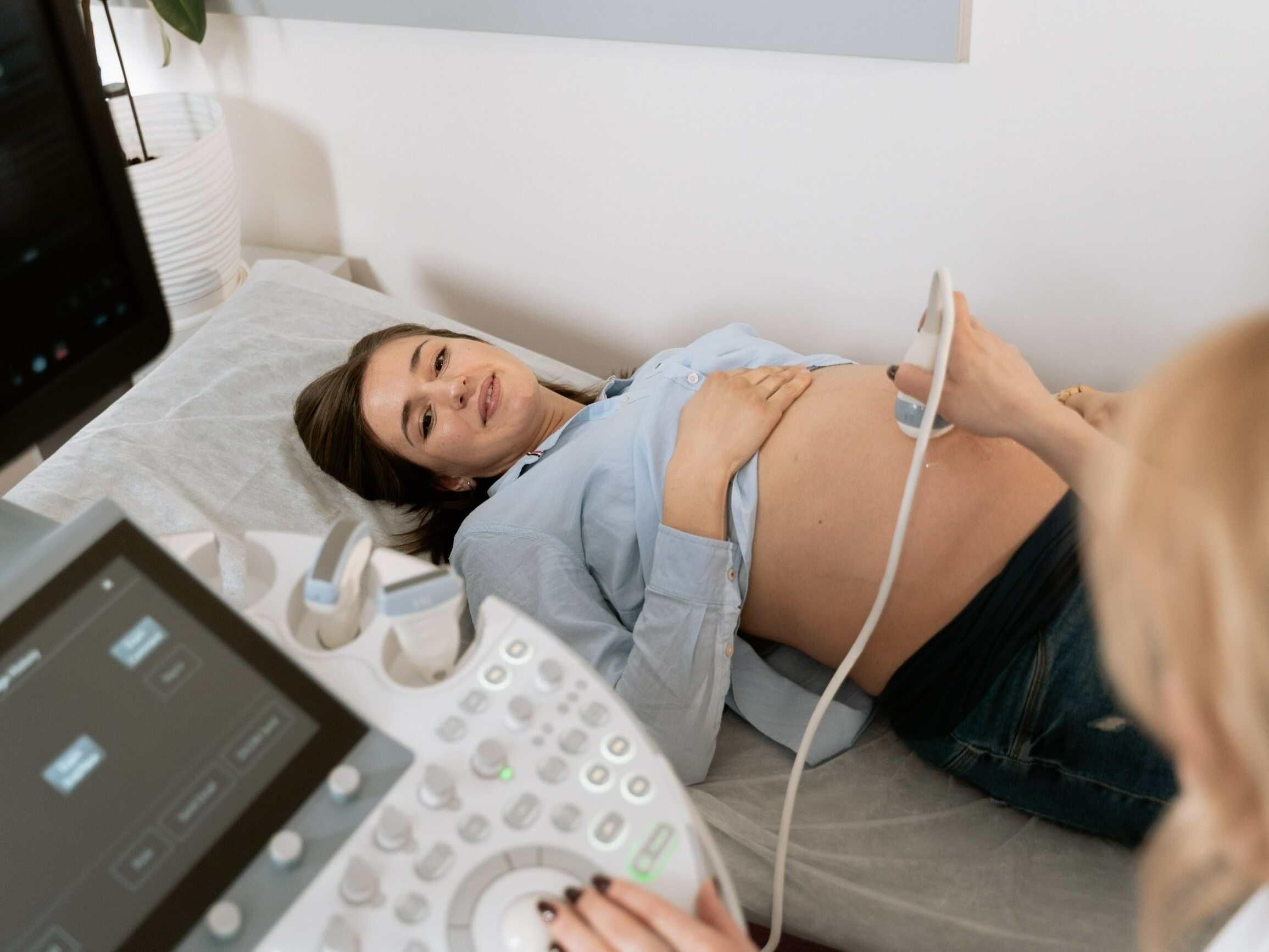Diagnosis of health disorders in pregnant women

Pregnant women should be provided with medical care at every stage of this special period of their lives. Care may include doctor visits, midwifery care, imaging diagnostics (ultrasound) and laboratory diagnostics. Future mothers are diagnosed both in terms of the health of their unborn child and their own.
Pregnancy carries many risks, hormonal balance changes, and previously asymptomatic diseases may appear. Below we present the basic tests recommended during pregnancy and the diseases that often accompany it.
Basic laboratory tests
The schedule of basic laboratory tests for pregnant women is specified in the recommendations of the Polish Society of Gynecologists and Obstetricians. Depending on the age of pregnancy, the health of the woman and the developing child, laboratory diagnostics may be extended and have a preventive or diagnostic nature.
The first laboratory tests should be performed in the first trimester, preferably before the 10th week of pregnancy. These tests allow for the assessment of the initial health condition of the pregnant woman and include:
-
Blood count – a multi-parameter test including the assessment of the red blood cell, white blood cell and platelet systems. The test also includes the quantitative separation of leukocytes into populations: lymphocytes, neutrocytes, eosinophils, basophils and monocytes. The test allows for the detection of anemia, thrombocytopenia, inflammation and other disorders.
-
Blood group in the ABO and Rh system and immune antibodies – determining the blood group in the Rh system is very important in the prevention of serological conflict. In Rh(-) negative women, there is a risk of developing antibodies directed against the baby’s blood cells if the child is Rh(+) positive and serological conflict may occur.
-
General urine test – a test useful in diagnosing kidney and urinary system diseases, as well as in detecting complications of diseases such as diabetes or hypertension. The test consists of assessing the physicochemical properties of urine and the morphotic components of urine sediment.
-
Pap smear and vaginal cleanliness test.
-
Fasting blood glucose test – fasting blood glucose in a pregnant woman should be at the level of 70-90 mg/dl (3.5-5.0 mmol/l). Depending on the result obtained, further proceedings are determined.
-
Tests for detecting syphilis, HIV and HCV infection
-
Serological test (detection of antibodies) for toxoplasmosis and rubella.
In addition to the basic recommended tests, in pregnant women, depending on the clinical condition, other parameters may also be measured to assess kidney or liver function, including: uric acid, urea, creatinine, AST, ALT, bilirubin, electrolytes, protein in the daily urine collection or protein/creatinine ratio
Anemia and its impact on the health of mother and child
Iron is very important for the mother and the developing fetus – an element necessary for the proper production of red blood cells (erythrocytes). Both excess and deficiency of iron are inadvisable. In case of deficiency, anemia develops, which may result in an increased risk of low birth weight of the child, risk of perinatal complications or disorders in the development of the child’s nervous system.
Parameters used to assess iron metabolism in the mother’s body are:
-
Peripheral blood count, especially hemoglobin – is reduced in anemia and MCV (mean red blood cell volume) – a parameter reduced in iron deficiency.
-
Iron concentration in the blood
-
Ferritin concentration – an iron-storing protein
-
Concentration of transferrin – an iron transport protein and % saturation of transferrin with iron
The determination of these parameters allows the detection of iron deficiency and the differentiation of iron deficiency anemia from anemia resulting from chronic diseases. Another type of anemia may be caused by vitamin B12 and folic acid deficiencies, so the diagnosis can be extended to include the measurement of these parameters.
gestational diabetes
An important test performed in the 24-28th week of pregnancy is the oral glucose tolerance test. The test involves measuring blood glucose concentration twice: on an empty stomach and again 2 hours after drinking 75 g of dissolved glucose. The test is used to diagnose diabetes during pregnancy and should be performed on every pregnant woman whose fasting glucose level is ≤ 125 mg/dl.
Preeclampsia, i.e. preeclampsia
Eclampsia, i.e. the occurrence of convulsions in pregnant women, was described many years ago. The term preeclampsia is a condition preceding seizures and associated with hypertension and proteinuria (protein concentration in urine >300 mg/24h). The occurrence of preeclampsia is a condition that poses a threat to both the mother and the unborn child and may result in premature termination of pregnancy. The risk factors for preeclampsia are:
-
hypertension that occurs during pregnancy or chronic hypertension
-
chronic kidney diseases
-
autoimmune diseases (antiphospholipid syndrome, lupus erythematosus)
-
diabetes
Preeclampsia is a multi-organ disease and its causes have not yet been fully understood. Research conducted in this area indicates the main role of the placenta and the placental vascular epithelium. The disorders result in abnormal blood supply to the placenta, hypoxia and impaired blood flow. Therefore, in order to determine the risk of preeclampsia in the blood of a pregnant woman, two parameters are determined:
-
PlGF placental growth factor – a vascular endothelial growth factor that plays an important role in the formation of blood vessels, which determines the proper development of the placenta and fetus
-
sFlt-1 – soluble tyrosine kinase receptor for vascular endothelial growth factor secreted by the embryo.
In physiological pregnancy, sFlt-1 determines the proper development of the placenta and both factors are in balance. In the case of disorders of angiogenesis (formation of blood vessels), the balance occurs, the concentration of sFlt-1 increases due to placental ischemia and the concentration of PIGF decreases, which is caused by damage to the placenta. The increase in sFlt-1 occurs in the early, asymptomatic phase of the disease. Determination of these parameters has a prognostic value and allows to determine the probability of preeclampsia occurrence. The sFlt-1/PIGF ratio is also diagnostically useful. The test can be performed in all trimesters of pregnancy and is used to monitor the risk of preeclampsia.
Prenatal tests
A separate group of tests are prenatal tests used to detect genetic diseases and congenital defects of the fetus. These tests are divided into invasive and non-invasive. The screening test is the double PAPP-A test, which measures the concentration of pregnancy protein A (PAPP-A) and free β subunit of chorionic gonadotropin in the mother’s blood. Current technology has enabled the introduction of non-invasive tests, which involve the isolation of free fetal DNA circulating in the mother’s blood and the assessment of chromosomal disorders – genetic tests. Invasive tests are amniocentesis or chorionic villus sampling.
Laboratory tests are useful both in the prevention and diagnosis of various types of diseases that may threaten the life and health of both the mother and the unborn child.
Author: Alina Goralewska, MD, PhDDeputy Director for Science and Development
Synevo Medical Laboratories






